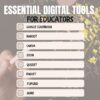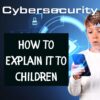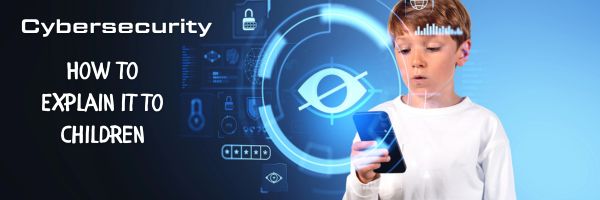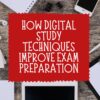Year: 2024
21 SAT/ACT Prep Online Resources
Here are popular online resources to prepare for ACT and SAT tests (click for updated list):
- Albert Online — lots of SAT practice exams, including subject areas.
- College Board
- Kaplan Test Prep
- Khan Academy reading-writing-practice
- Mindsnacks SAT Vocabulary–a big part of succeeding on the SAT essay is knowing the right word
- Number2.com–for SAT, ACT, GRE
- Perfect Score Project--to prepare for SATs
- Prep Factory–for SATs, ACTs, other
- Quizlet–hundreds of SAT vocabulary prep flashcards
- UWorld SAT Prep
- Veritas Prep–free and fee tips, videos and more
SAT Exams
Here are some that specialize in SAT exams:
Share this:
- Click to share on Facebook (Opens in new window) Facebook
- Click to share on X (Opens in new window) X
- Click to share on LinkedIn (Opens in new window) LinkedIn
- Click to share on Pinterest (Opens in new window) Pinterest
- Click to share on Telegram (Opens in new window) Telegram
- Click to email a link to a friend (Opens in new window) Email
- More
We Honor July 4th in America
Like every year, I exuberantly celebrate America’s birthday. I’d say times are tough here in the US, but that seems to be true everywhere in the world. So, I won’t complain. I will enjoy the love of America as all of my international friends love their homeland.
[youtube https://www.youtube.com/watch?v=Ke4gRMowvQg]
This one–Chris Stapleton–4 Million views since Super Bowl 2023:
[youtube https://www.youtube.com/watch?v=tcs6HLKz_aQ][youtube https://www.youtube.com/watch?v=k4OsP4BsATw]
[youtube https://www.youtube.com/watch?v=p4kJ9sMDhaY]
[youtube https://www.youtube.com/watch?v=_ds3MvMUdNk]
Here’s the feel-good video for all patriots. If you missed this viral video from the Navy Women’s Lacrosse team, enjoy!
https://youtube.com/shorts/u-dsWFOiOIg?si=cKUCB-4A082Uo4zb
Share this:
- Click to share on Facebook (Opens in new window) Facebook
- Click to share on X (Opens in new window) X
- Click to share on LinkedIn (Opens in new window) LinkedIn
- Click to share on Pinterest (Opens in new window) Pinterest
- Click to share on Telegram (Opens in new window) Telegram
- Click to email a link to a friend (Opens in new window) Email
- More
14 Essential Digital Tools for Educators to Streamline Daily Activities
There are a lot to digital tools people swear are essential to educators. Here’s a list of fourteen put together by the Ask a Tech Teacher team. I use about half of them. How about you?
14 Essential Digital Tools for Educators to Streamline Daily Activities
In 2024’s fast-paced educational environment, teachers and all those in the academe face the daily challenge of managing their school or course’s efficiency. From spanning out schedules and lesson planning to grading, the responsibilities seem a never-ending cycle and quite overwhelming.
Thankfully, however, today’s advancements brought digital tools to help streamline all these school-related activities. They make educators’ lives a whole lot easier, aside from improving the learning experiences for their students.
Today, you can count on these tools to make educators’ lives more seamless once you get them working through digital routines.
Top 14 Educators’ Tools in 2024
Share this:
- Click to share on Facebook (Opens in new window) Facebook
- Click to share on X (Opens in new window) X
- Click to share on LinkedIn (Opens in new window) LinkedIn
- Click to share on Pinterest (Opens in new window) Pinterest
- Click to share on Telegram (Opens in new window) Telegram
- Click to email a link to a friend (Opens in new window) Email
- More
Subscriber Special: 20% Discount on Foundational Materials
Every month, subscribers to our newsletter get a free/discounted resource to help their tech teaching.
Over the next few weeks, we will be sharing details on our blog (Ask a Tech Teacher) about Structured Learning resources to get your new school year started. These are often collected into back-to-school survival kits. Purchase one of those with the coupon code:
Back-to-school Special Survival Kits
Get 20% off listed price.
Offer expires Sept. 15, 2024
Share this:
- Click to share on Facebook (Opens in new window) Facebook
- Click to share on X (Opens in new window) X
- Click to share on LinkedIn (Opens in new window) LinkedIn
- Click to share on Pinterest (Opens in new window) Pinterest
- Click to share on Telegram (Opens in new window) Telegram
- Click to email a link to a friend (Opens in new window) Email
- More
What You Might Have Missed in June–What’s up in July
Here are the most-read posts for the past month:
- The Future of Online Learning: Benefits and Strategies for Educators
- How to Teach Financial Literacy Using Real-World Examples
- How Virtual Information Sessions Are Changing K-12 Education
- Incorporating Monthly Giving Projects into STEM Curriculum: Inspiring the Next Generation of Philanthropists
- How Cloud Security Empowers Online Learning Platforms
- How to Help Students Run a Genius Bar
- June is Internet Safety Month
- World Environment Day: Living Responsibly with Nature
- 11 Online Resources About Animation
Here’s a preview of what’s coming up (these may change as scheduling adapts to reader needs): (more…)
Share this:
- Click to share on Facebook (Opens in new window) Facebook
- Click to share on X (Opens in new window) X
- Click to share on LinkedIn (Opens in new window) LinkedIn
- Click to share on Pinterest (Opens in new window) Pinterest
- Click to share on Telegram (Opens in new window) Telegram
- Click to email a link to a friend (Opens in new window) Email
- More
Top 13 Digital Citizenship Tips For Enhancing Online Safety
Navigating the internet is akin to exploring a lively city with its exciting opportunities and hidden dangers, where good digital citizenship provides the legal guidelines that ensure safe and respectful interactions. Imagine if your child or students are trying to explore that glitz safely? Here are tried-and-true ideas from the Ask a Tech Teacher team that provide good starting points to develop habits of vigilance when using the internet:
- create strong passwords
- two-factor authentication
- secure devices
- antivirus software
- avoid phishing scams
- more
Top 13 Digital Citizenship Tips For Enhancing Online Safety
Navigating the internet can be a bit like wandering through a bustling city, exciting but full of potential pitfalls. Good digital citizenship is all about making smart, safe, and respectful choices online, helping you make the most of this incredible resource while allowing billions of others to do the same.
As such, there are a handful of universally agreed-upon principles and best practices for being a good digital citizen. Here are the top 13 tips from the same, mainly pertaining to enhancing your online safety and well-being. (more…)
Share this:
- Click to share on Facebook (Opens in new window) Facebook
- Click to share on X (Opens in new window) X
- Click to share on LinkedIn (Opens in new window) LinkedIn
- Click to share on Pinterest (Opens in new window) Pinterest
- Click to share on Telegram (Opens in new window) Telegram
- Click to email a link to a friend (Opens in new window) Email
- More
How to Explain Cybersecurity for Children
It is important for children to know how to be safe while navigating the digital landscape. It’s easy when teachers present cybersecurity topics properly. Here are ideas from the Ask a Tech Teacher team:
How to Explain Cybersecurity for Children
Cybersecurity plays a crucial role in our daily lives and will continue to gain importance. Educators can prepare students to protect themselves online. Of course, they should introduce online security topics in an age-appropriate manner.
Each successful teacher can make a big difference. Lousy cybersecurity practices or lack of knowledge about them often affect more than one person at a time. When they teach about safety online, they may affect not only the lives of their students but society as a whole.
Here is how to explain cybersecurity for children as an educator. (more…)
Share this:
- Click to share on Facebook (Opens in new window) Facebook
- Click to share on X (Opens in new window) X
- Click to share on LinkedIn (Opens in new window) LinkedIn
- Click to share on Pinterest (Opens in new window) Pinterest
- Click to share on Telegram (Opens in new window) Telegram
- Click to email a link to a friend (Opens in new window) Email
- More
The Secret to Successful Essay Writing: 10 Proven Tips to Level Up
Essay writing is a crucial skill for academic and professional success because it teaches clear, logical, and persuasive communication. The Ask a Tech Teacher team has come up with 10 practical tips to enhance your essay writing abilities, covering aspects like thesis development, structure, evidence, transitions, and proper grammar:
Mastering the Art of Essay Writing
Do you find essay writing daunting? You’re not alone. Many students struggle with this essential academic task. But what if I told you there’s a way to make it easier and more enjoyable? In this blog post, we’ll unlock the secrets to successful essay writing and share 10 proven tips to help you level up your writing game.
Writing essays is an essential skill for both students and academic writers. Achieving high grades, personal development, and future professional success all hinge on strong essay writing abilities. This guide will delve into the elements that create an effective essay and offer 10 practical tips to sharpen your writing skills. Becoming a proficient Essay Writer can make a significant difference in your academic and professional life. By mastering these techniques, you can enhance your ability to produce compelling, well-structured essays. By the end of this post, you’ll possess the tools needed to excel in crafting essays that stand out. (more…)
Share this:
- Click to share on Facebook (Opens in new window) Facebook
- Click to share on X (Opens in new window) X
- Click to share on LinkedIn (Opens in new window) LinkedIn
- Click to share on Pinterest (Opens in new window) Pinterest
- Click to share on Telegram (Opens in new window) Telegram
- Click to email a link to a friend (Opens in new window) Email
- More
How Digital Study Techniques Improve Exam Preparation
How Digital Study Techniques Improve Exam Preparation
Studying for exams can often feel like this huge, monumental task that causes not only stress but existential anxiety. But it doesn’t have to be this way – yes, the pressure is real, and yes, you may have an immensely demanding study schedule, but with the right tools and strategies, you can turn this daunting challenge into a manageable experience. Maybe even a rewarding one (yes, you read that right).
Here are some of the best digital study techniques that can make your study sessions more effective and help you ace all your exams.
Use Time-Management Tools
Let’s start with the basics: time management. To make sure your every study session is as productive as it can be, you need to learn to manage your time effectively. Meaning, when it’s time to study, you need to make every minute count.
Digital tools like calendar apps like Google Calendar or even Outlook, as well as task managers like Trello or Todoist, can help you organize your study schedule. Likewise, apps like Pomodoro can help you get more focused when studying by splitting your study sessions into 25-minute stretches of work and 5-minute breaks.
Invest in Quality Online Study Resources
There’s no reason to study like a monk – the internet is full of diverse study materials that cater to different learning styles, including yours. Websites like Khan Academy or Quizlet provide access to lectures, practice tests, and flashcards among other things.
For example, with Quizlet, you can create digital flashcards and practice tests tailored to your syllabus. If you’re preparing for a really demanding exam, like the bar exam, online resources like Quimbee offer everything you need to pass it.
Say you want to prepare effectively for the North Carolina bar test – they have multiple full-length practice MBEs and thousands of MBE practice questions, plus offer personalized feedback from an attorney for practice essays to help you succeed. Of course, all of the course material can be studied from your computer. (more…)
Share this:
- Click to share on Facebook (Opens in new window) Facebook
- Click to share on X (Opens in new window) X
- Click to share on LinkedIn (Opens in new window) LinkedIn
- Click to share on Pinterest (Opens in new window) Pinterest
- Click to share on Telegram (Opens in new window) Telegram
- Click to email a link to a friend (Opens in new window) Email
- More
From Fractions to Functions: Navigating Key Topics in GCSE Maths
Sophia Birk, a digital nomad currently living in Poland, is an international member of the AATT team of educators and a math aficionado. Here are her thoughts on navigating key topics in GCSE Maths:
From Fractions to Functions: Navigating Key Topics in GCSE Maths
The General Certificate of Secondary Education (GCSE) exams are a major ordeal for students and teachers. For our learners, the issue revolves around earning the best marks – the highest grades. For teachers, preparing students for GCSE success is the greatest concern.
Maths is one of two compulsory GCSE subjects. It’s also a life skill that, woefully, far too few are well-versed in, according to statistics. Maths teachers aim to ensure learners leave school with well-developed numeracy capabilities. The GCSE exam certifies their efforts.
These papers test students over everything they learned in maths classes, from primary school through secondary education. Thus, pupils have much to revise ahead of their exams. This article presents the six key topics that feature on the exam, and what each topic covers. (more…)
Share this:
- Click to share on Facebook (Opens in new window) Facebook
- Click to share on X (Opens in new window) X
- Click to share on LinkedIn (Opens in new window) LinkedIn
- Click to share on Pinterest (Opens in new window) Pinterest
- Click to share on Telegram (Opens in new window) Telegram
- Click to email a link to a friend (Opens in new window) Email
- More






















































